Brief

Step into the endurance zone. As the health and economic crisis posed by Covid-19 progresses, and the rate of new cases starts to slow in a number of countries, it’s apparent that social interactions will not sort into a neat before and after. For a period of uncertain length, people will need to endure with varying levels of anxiety.
Companies will enter the same zone. Most have completed the first phase of protection protocols for consumers and employees. They will need to continue taking actions to reduce risk for consumers, and to keep people informed once the infection rate begins to wane. But for how long? How will they know when consumers may be receptive to messages with a different tone, or to reengaging with products and services they set aside in recent months?

Macro Surveillance Platform
For more detail on the business implications of coronavirus from Bain’s Macro Trends Group, log on to the Macro Surveillance Platform. Learn more about the platform >
Listening to social media and understanding the feedback can help in this regard. Bain & Company used a social media scraping tool by Synthesio to analyze posts containing keywords related to personal risk reduction—mask, handwashing, virus test, isolate and so on—in several countries since the first of the year.
In China, such posts rose sharply in the week after the first case outside of Wuhan was publicized on January 19 (see Figure 1). In the US and Europe, an initial jump in posts occurred when people learned what was happening in China, followed by a greater surge when the coronavirus reached those countries (see Figures 2 and 3).
Chinese social media posts related to personal risk reduction spiked and then leveled off at roughly 10 times pre-coronavirus levels
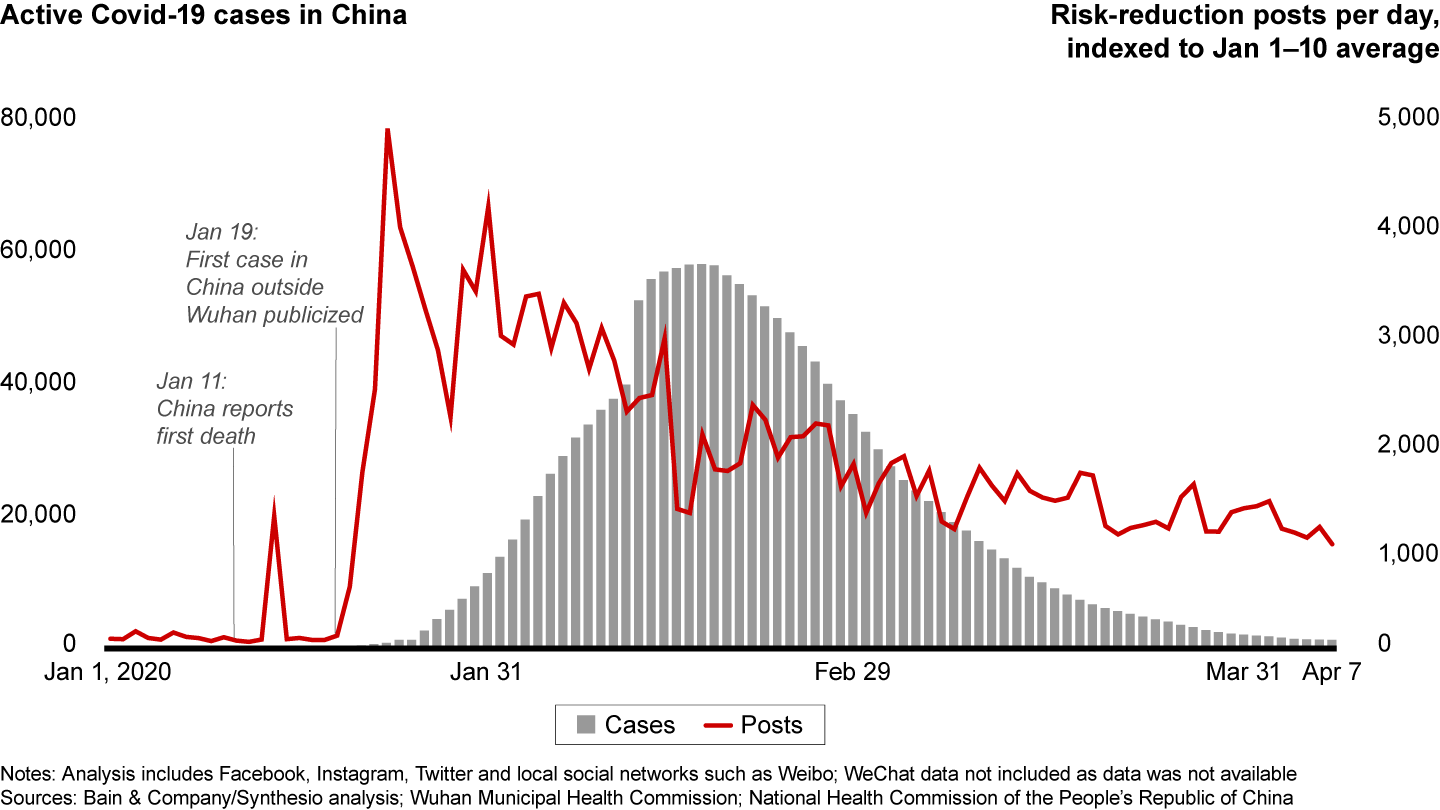
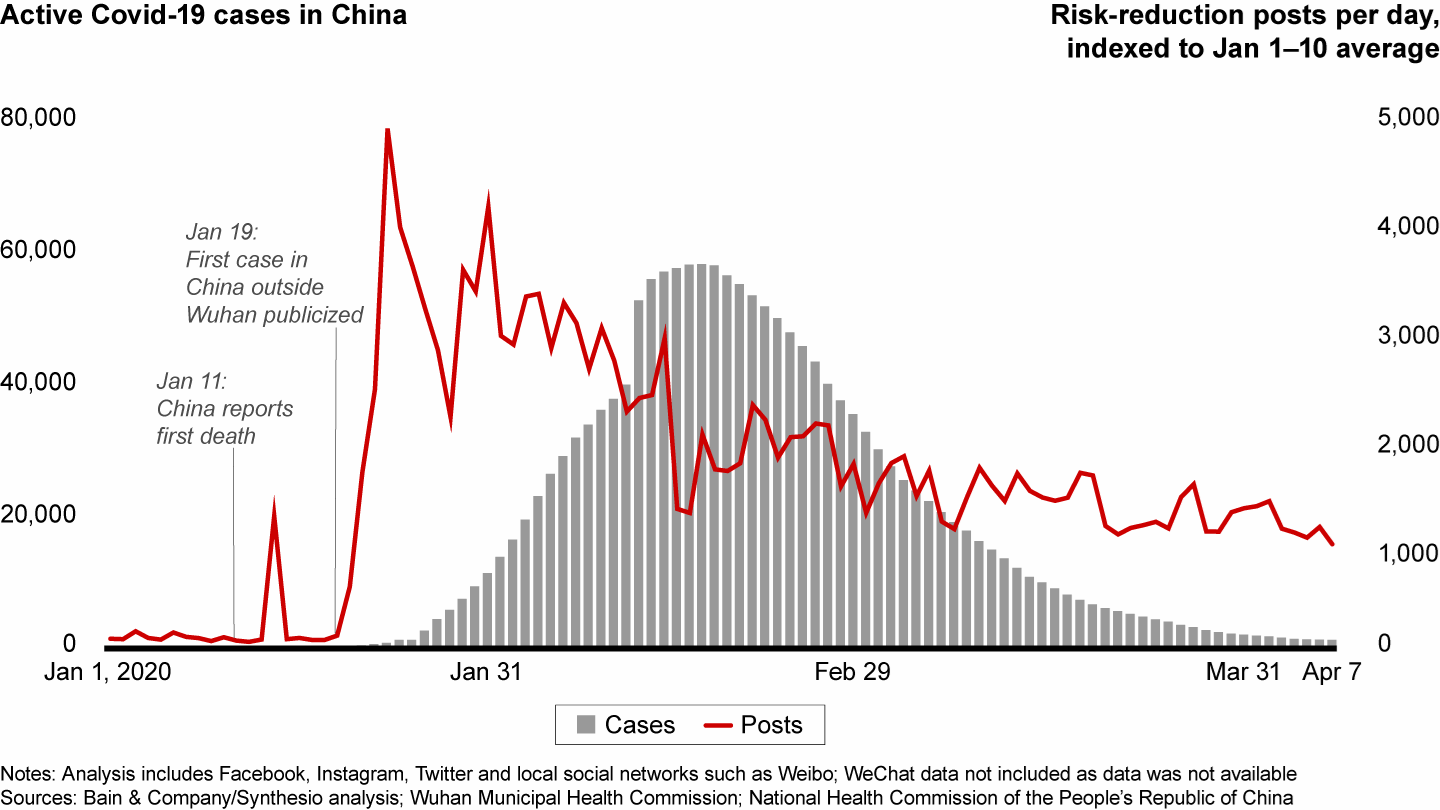
US risk-reduction posts rose following publicity about China’s coronavirus cases, then spiked in advance of the rise in active cases in the US
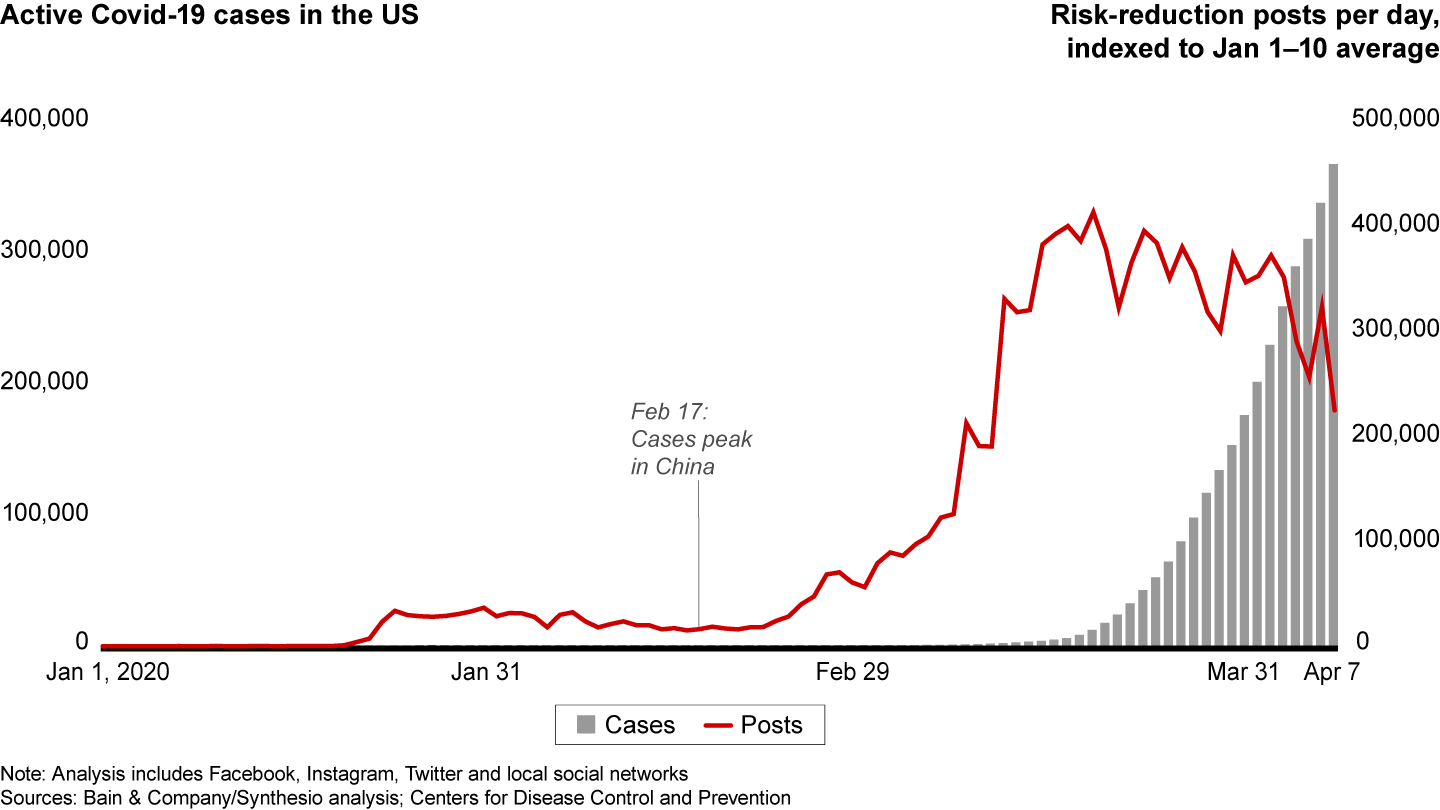
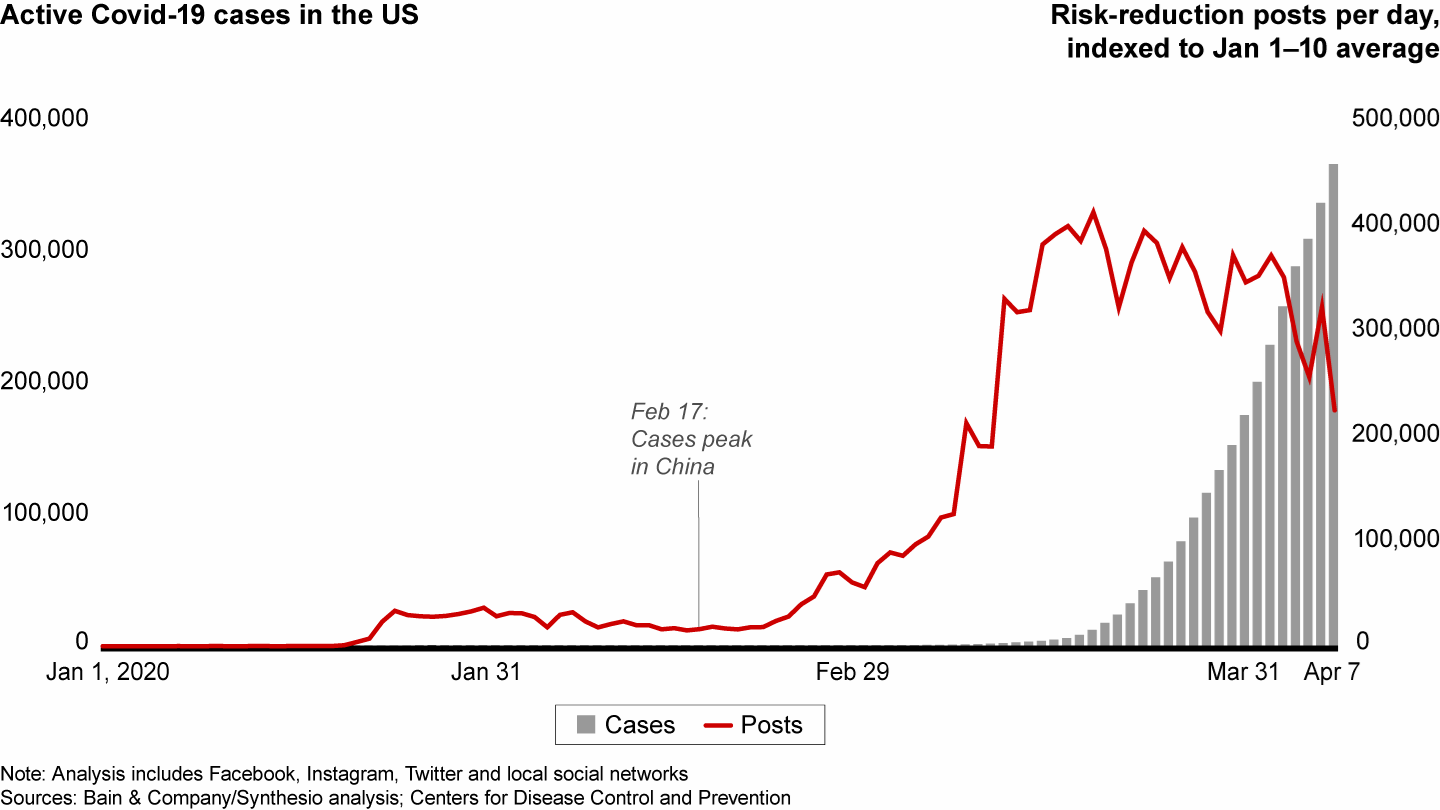
In Europe, risk-reduction posts spiked when the number of European cases started to rise
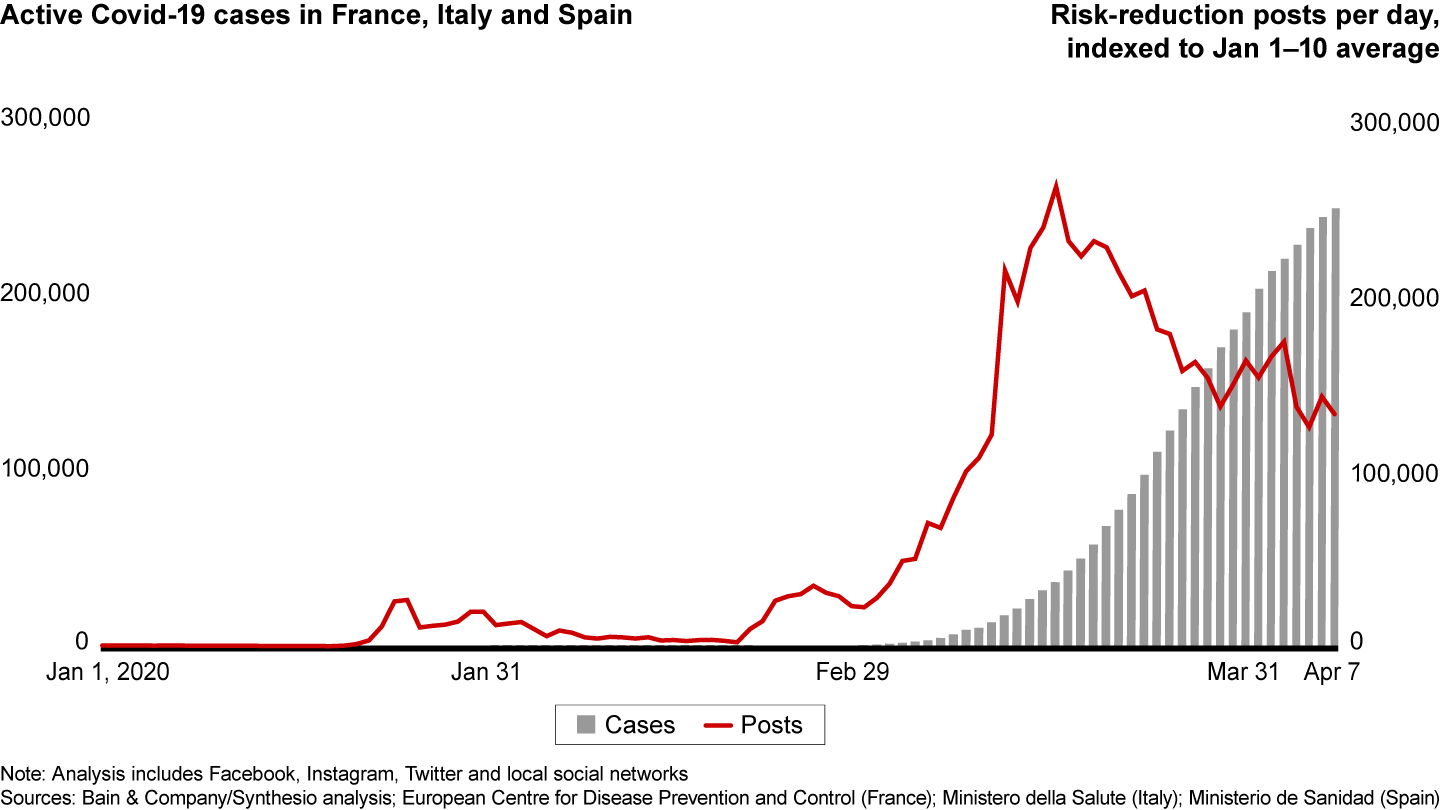
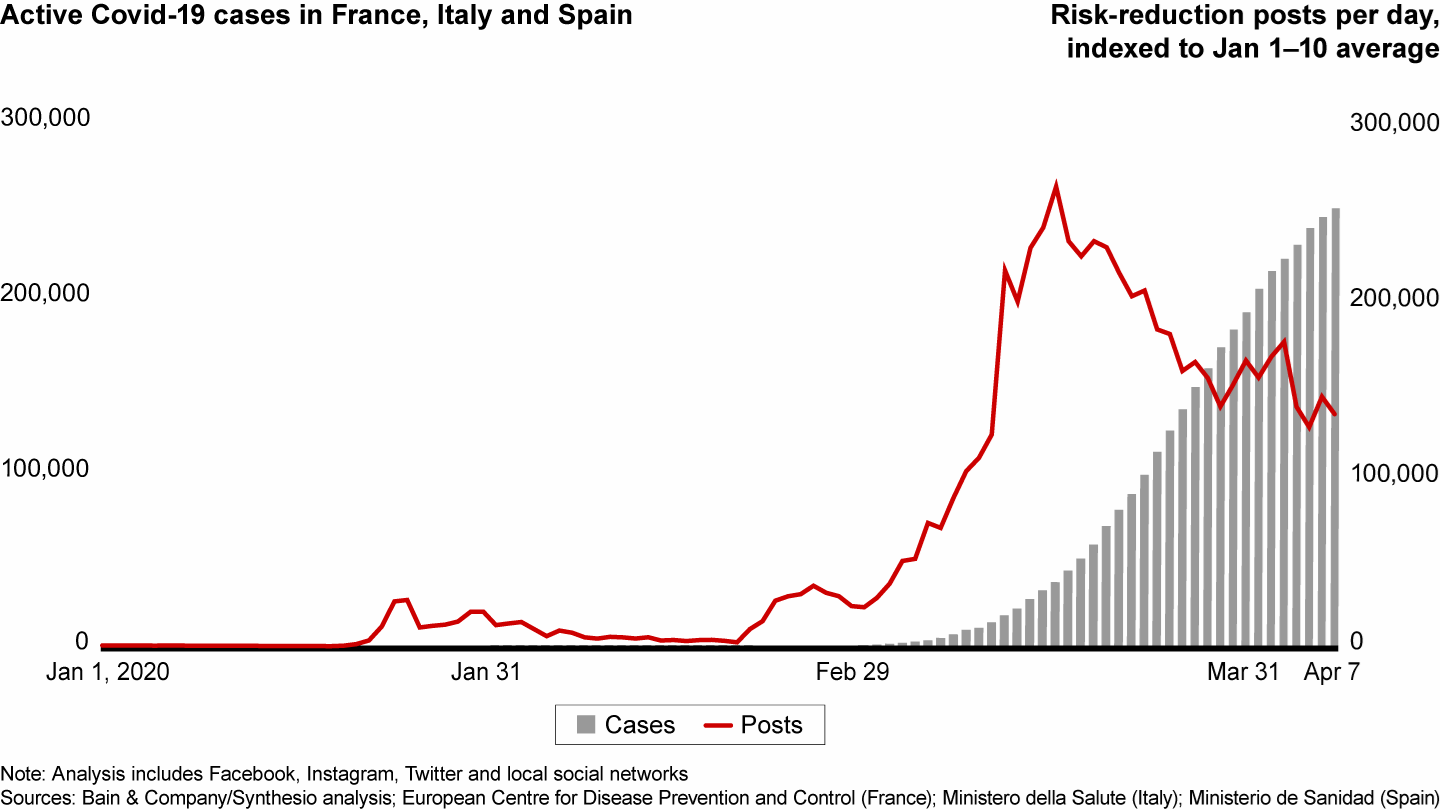
Although risk-reduction posts declined in China as the number of active cases dropped, the level of social media chatter remained at roughly 10 times the pre-virus baseline. This suggests that a higher level of worry among consumers will continue at least for the medium term in the US and Europe, possibly spiking again if the infection rate turns up.
Our analysis also demonstrates that companies worldwide might have picked up on the severity of the threat much earlier by monitoring appropriate keywords in social media. Chatter about risk reduction rose significantly in the US and Europe in mid-January, yet government and corporate alarms did not sound until many weeks later.
Spot the shift in what consumers will value
We have the benefit of hindsight, of course. Still, looking ahead, companies can use social media patterns as one tool to anticipate shifts in what consumers value. Of the 30 Elements of Value® we’ve identified in consumer markets, reduces risk has risen as a high priority for most people; in some industries, it’s almost as important as the element of perceived quality. Products and services must attain a certain minimum level of quality, and no other elements can make up for a significant shortfall on this one.
Another element that has ascended in importance is affiliation and belonging. In the US, for example, telecommunications providers have experienced a surge in plain old voice calls. The New York Times reported that Verizon has been averaging 800 million wireless calls each weekday, more than twice the number made on Mother’s Day. Those calls are longer than average as well. AT&T cellular calls have risen 35%, and Wi-Fi–based calls have almost doubled from averages in normal times. By contrast, the carriers’ Internet traffic was up 20%–25%.
Risk-related social media posts may remain at their current levels for some time, or they might decline or bounce around. Whatever the pattern, companies taking the pulse of social media should determine when their consumers are receptive to messaging and signature actions that don’t center on risk reduction. The timing and degree of receptivity will vary by industry and location, so companies will need to tune their actions and messages accordingly.
A premature shift to more optimistic messaging could seem tone-deaf to consumers’ continued anxiety. Waiting too long, on the other hand, could delay a revival in sales. Rigorous social media analysis can help inform decisions on when to retune, and which Elements of Value will resonate at that moment.

Coronavirus
The global Covid-19 pandemic has extracted a terrible human toll and spurred sweeping changes in the world economy. Across industries, executives have begun reassessing their strategies and repositioning their companies to thrive now and in the world beyond coronavirus.
Fleur van Beem is a partner with Bain & Company's Telecommunications, Media & Technology practice, and she leads the Customer Strategy & Marketing practice in Europe, the Middle East and Africa. Derek Deng is a partner with Bain’s Consumer Products practice. Eric Almquist is a partner with Bain's Advanced Analytics and Customer Strategy & Marketing practices. They are based, respectively, in Amsterdam, Shanghai and Boston.
Elements of Value® is a registered trademark of Bain & Company, Inc.